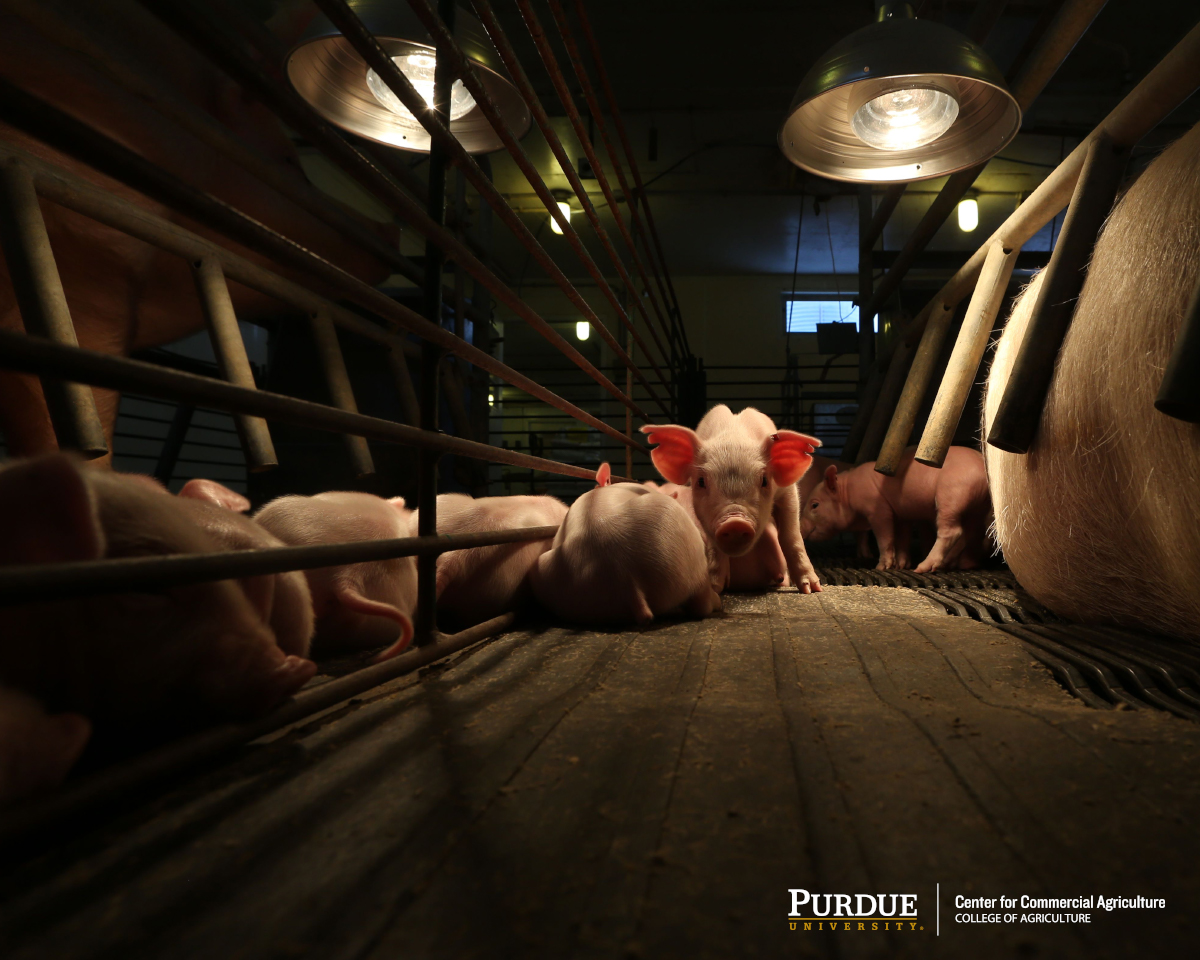November 21, 2019
Long-Term Trends in Pigs per Litter
by Michael Langemeier
Key performance metrics for swine production include feed conversion, litters per sow per year, and pigs per litter. All of these metrics have improved dramatically over time. Improvements in production performance are critical to controlling production costs and for the industry to remain competitive in comparison to swine producers in other countries and competing meats. This article examines long-term trends in pigs per litter.
Pigs per litter data for the U.S. is available from USDA-NASS on a monthly, quarterly, and annual basis. Figure 1 illustrates actual and predicted pigs per litter from 1993 to 2018. A simple linear trend was used to predict pigs per litter for each year. The annual growth rate in pigs per litter was 0.10 pigs per year or 1.07 percent. This may seem small, however, over the 26-year period, this equates to 2.57 pigs or an increase of approximately 32 percent.

Figure 1. Trend in Pig per Litter
Production performance, measured using pigs per litter, has been particularly strong in the last few months. For the first and second quarters of 2019, pigs per litter averaged 10.75 and 11.05, respectively. In August in 2019, the latest month for which data is available, pigs per litter was 11.20. In contrast, the predicted number of pigs per litter for 2019 using the model referenced above, was only 10.66. If pigs per litter for the remaining months in 2019 average 11 pigs per litter, 2019 would be one of the best years in terms of improvements in production performance over the last three decades.
Improvements in production performance, such as litters per sow per year and pigs per litter, have impacts on the number of sows needed to supply the domestic and export markets. Obviously, if pigs per litter had not increased over the last few decades, we would need a much larger sow herd. In addition to production performance, the increasing market weight of barrows and gilts has impacted the size of the sow herd needed to supply our markets. To provide some perspective on the importance of production performance and market weights, we will contrast the growth rates in sows farrowed, pig crop, and swine production in pounds. The annual growth rate in the U.S. sow herd during the 1993 to 2018 period is less than 0.01 percent. In contrast, the annual growth rate in the U.S. pig crop and U.S. swine production are 1.13 percent and 1.87 percent, respectively.
In closing, pigs per litter has increased at a rate of 0.10 per year since 1993. Another way of stating the same thing, the annual growth rate of pigs per litter in the U.S. was 1.07 percent from 1993 to 2018. Continued improvements in production performance will help ensure the U.S. swine industry remains competitive.

TAGS:
TEAM LINKS:
RELATED RESOURCES
UPCOMING EVENTS
We are taking a short break, but please plan to join us at one of our future programs that is a little farther in the future.




